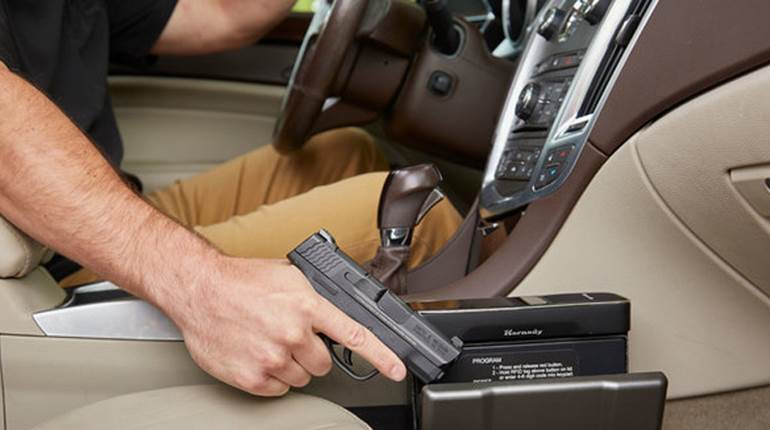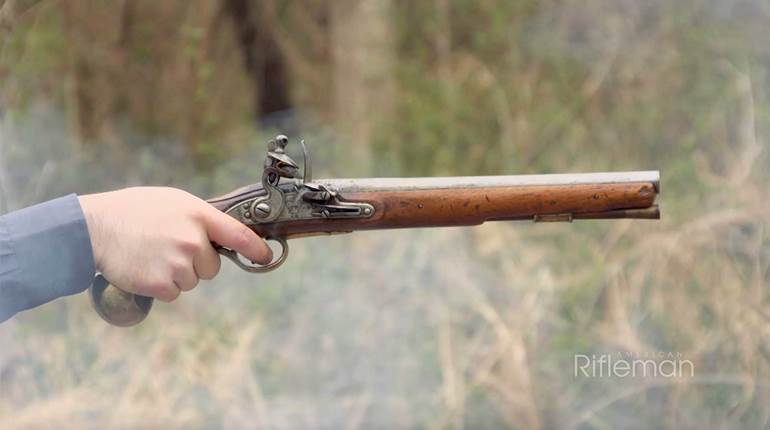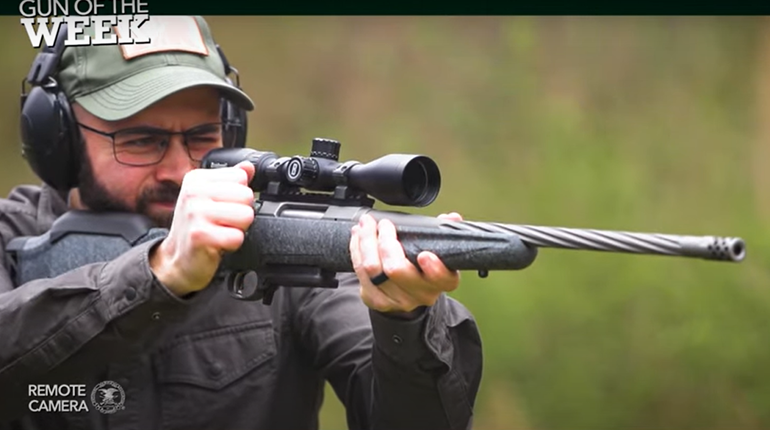
Frankie McRae has a slightly different approach when he teaches self-defense with a gun at Raidon Tactics, which is based about 30 minutes north of Fort Bragg in N.C. His decades of experience in the U.S. Army—including as a Green Beret stationed at the U.S. Army’s Special Operations Center of Excellence—shows, yet it quickly takes a back seat once the conversation turns to helping students survive a criminal attack.
Frankie McRae talks with Justin Coufal, director of marketing at Raidon Tactics, in front of one of the facility’s classrooms.
He never mentioned heroics overseas when I visited, although he did confirm multiple deployments. That single-minded passion is refreshingly rare in this age of overnight social media celebrity. I’m sure he’d share a story or two during classroom breaks, but it might take a crowbar to pry them out.
Don’t get me wrong. He’s friendly, knowledgeable and has the kind of military plagues and awards on the walls that confirm his expertise, but once you walk in the door, it’s about you and your loved ones.
During my visit he demonstrated how fast a perpetrator can close the gap and stab someone from 10 yards. The exercise was a painful reminder that successfully drawing from under concealment at that distance, while under stress, is a challenge, even when you abbreviate the process to simply rotating the handgun directly above the holster to engage.
His suggestion: Start the draw, while stepping out of the direct line being taken at you by the bad guy to buy lifesaving time (and distance, because their momentum will carry them past). Rotate to maximize your ability to keep the criminal in your sights. It’s common sense, but there won’t be time to stop and decide on the move when a blade-wielding attacker is closing the gap.
To commit it to memory, instant memory, it takes lots of practice with monitoring by an experienced instructor. It sounds as simple as chewing gum and walking at the same time, but it’s easy to cross your feet and wind up on your back at an unthinkable time. I begged off when he offered to demonstrate with one of the “stun” knives he employs with students willing to add stress to their reps.
Unfortunately, most ranges won’t allow you to draw from leather, much less add footwork and electrified props. Thankfully, McRae’s wife (who didn’t want to be named or quoted) purchased the 37 PSR Gun Club about the time of his retirement. She remodeled the clubhouse and classrooms, constructed a shoot house that can be converted to multiple configurations and included “lanes” where you can shoot from/around a vehicle, from elevation, atop a cargo container, put up steel plates, negotiate barricades and more.
At 45 minutes south of Raleigh, N.C., and a half hour from Fayetteville, N.C., it’s a dynamic-shooting resource for a lot of tar heel shooters. Gun rentals are available, and gear/ammo is also for sale. McRae even offers a canine training class, when enough people sign up or it’s requested by law enforcement. Shooting matches are held every month, too.
It’s not quite the “American Dream” you might expect from Norman Rockwell, but there’s no denying the way the McRae’s have renewed their “vows,” in a business sense—after all those deployments and years apart—is one of those unusual stories that set the shooting sports apart from nearly every other industry.




































